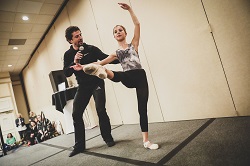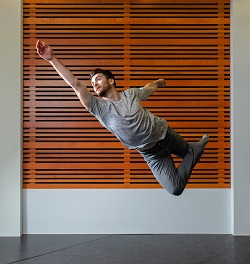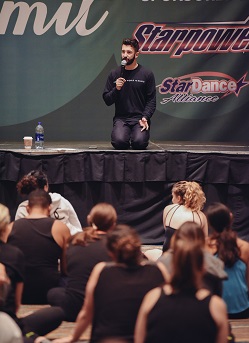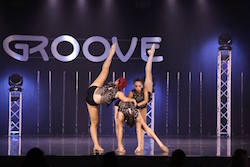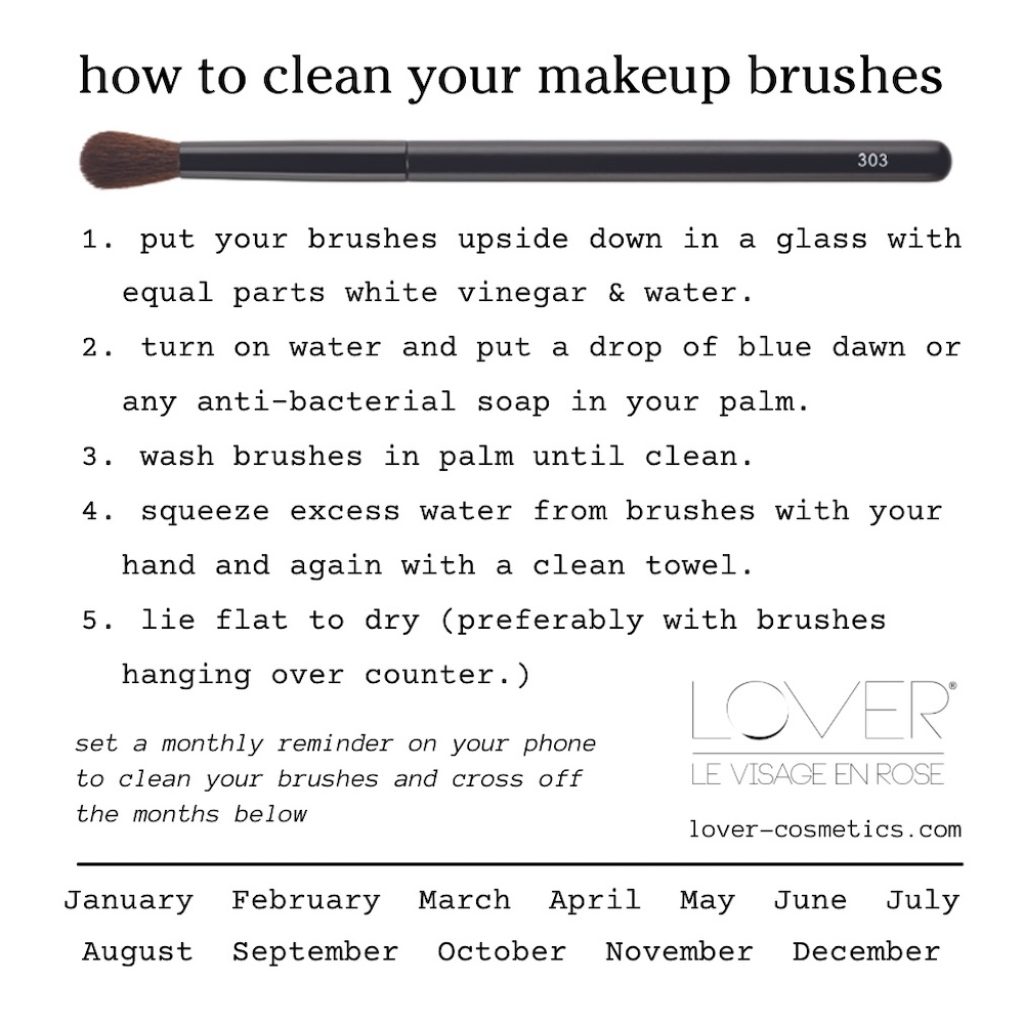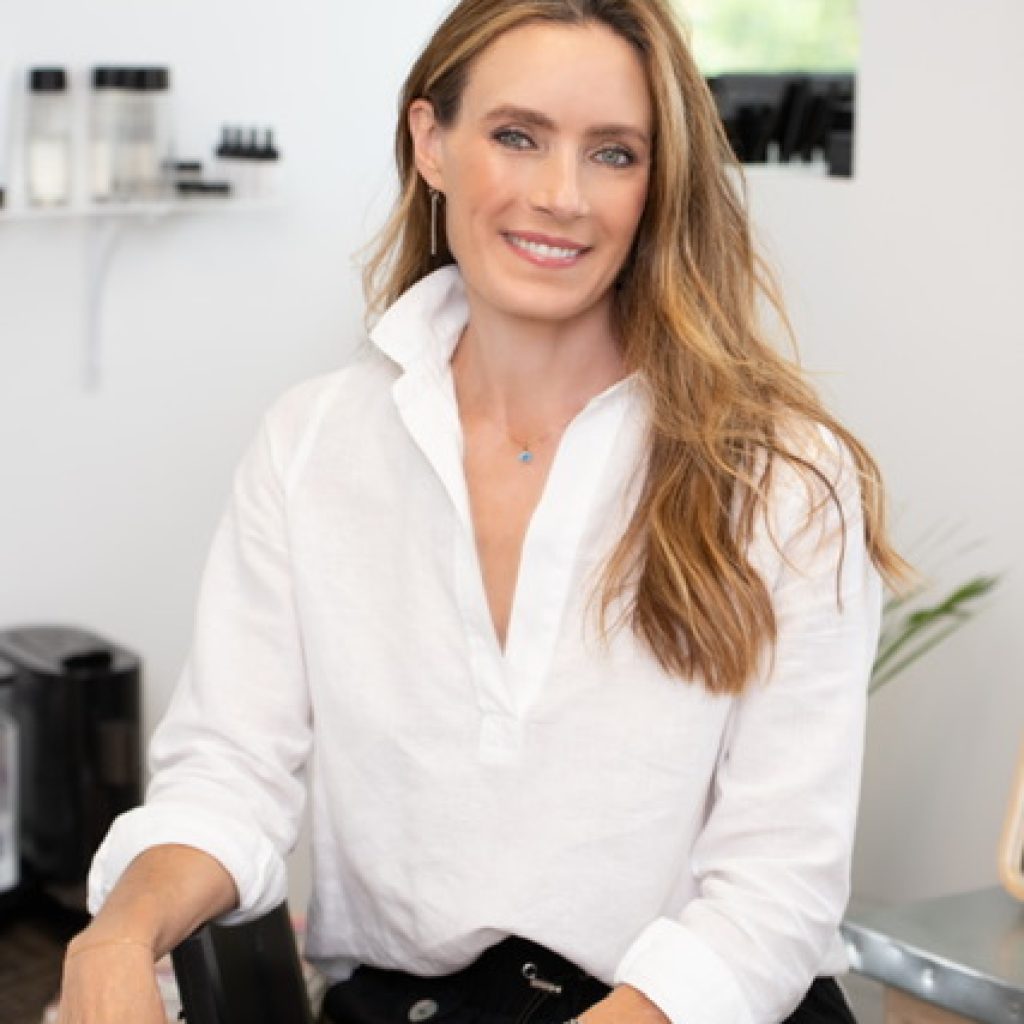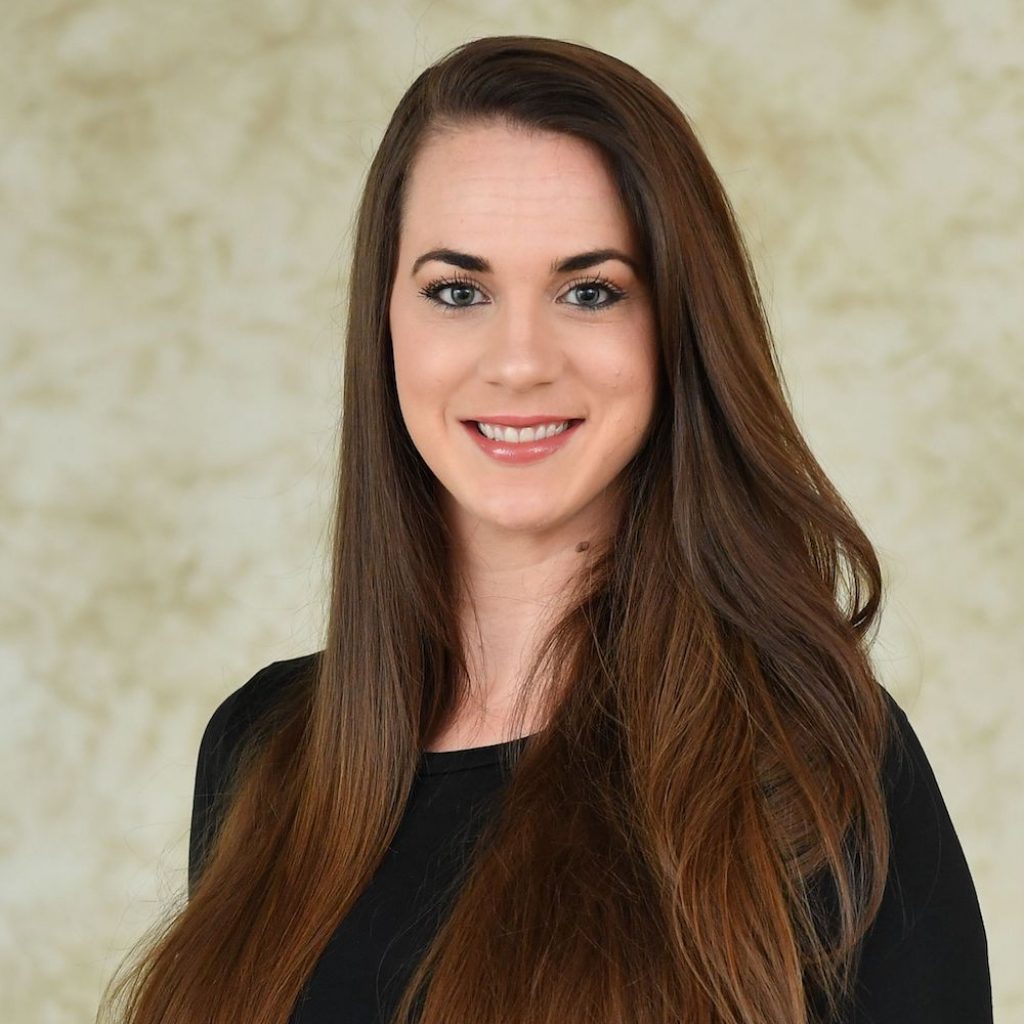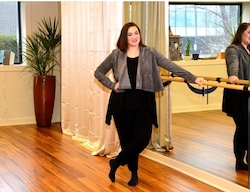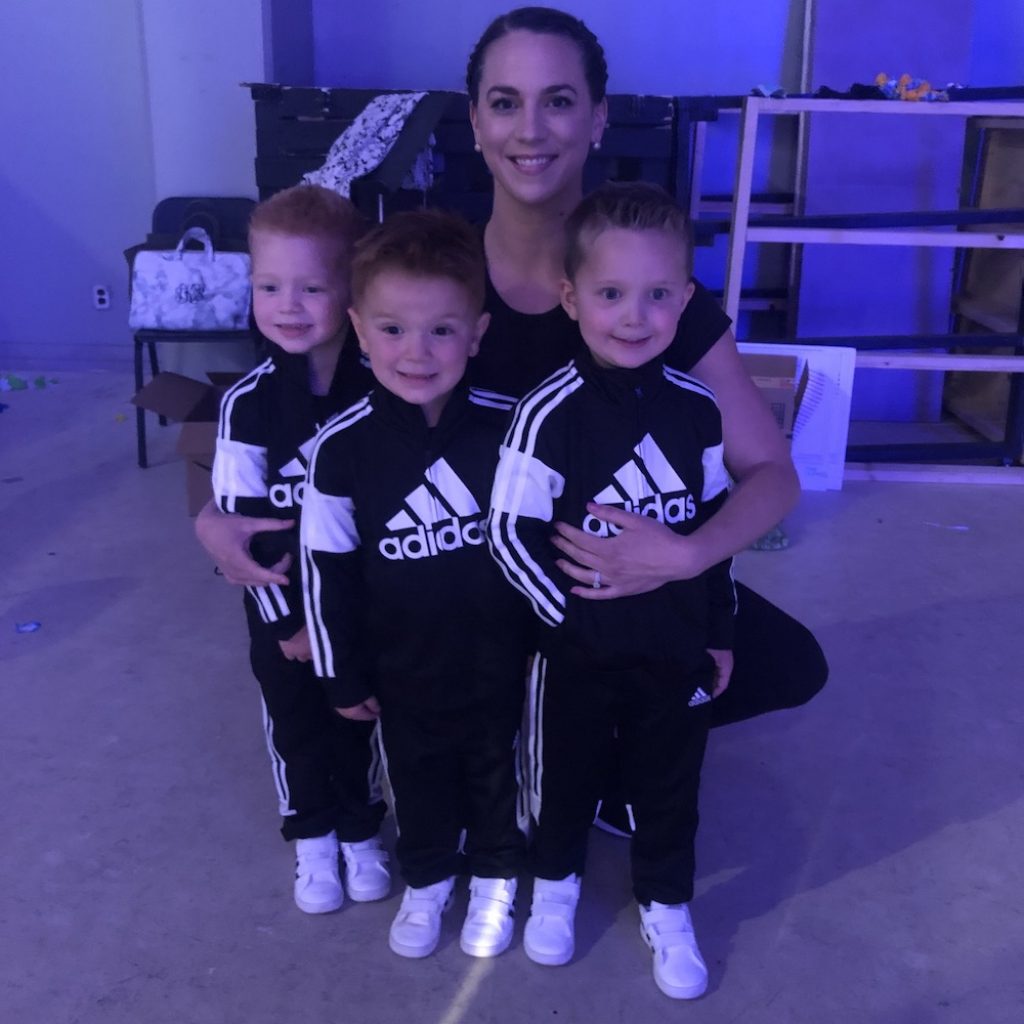CLI Studios: Inspiration, Collaboration and Education
Note: CLI Studios has recently revised its products and services to provide them all through its Studio Partnership Program, where CLI works directly with dance studios. Stay tuned for a new article on CLI’s programs in 2018!
It is rare to find a dance company so willing to be about the artist, and not ulterior motives. CLI Studios is about the artist. They’re more about the dancer and teacher learning and continuing to stay inspired, and less about how much money they make at the end of a fiscal year. CLI Studios is about the choreographer, the dancer, the teacher, and the studio owner growing and collaborating to fuel the world of dance through online sharing. This is a business model I can get behind.
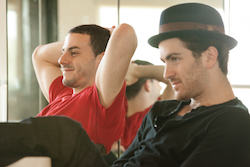
Co-founders Jon Arpino and Teddy Forance. Photo by Rob Daly and Quinn Wharton.
About two years ago, CLI Studios Co-Founders Jon Arpino and Teddy Forance were talking about how Forance and a few other notable choreographer friends receive requests from studios all around the country and world to teach master classes. Time for these renowned choreographers, however, is precious and rare. Also, unless you live in New York or Los Angeles, it is unlikely you have the opportunity to take class from Allison Holker, tWitch, or Caitlin Kinney on a weekly basis.
Enter CLI Studios – an online dance class sharing platform that allows members the opportunity to learn from 40 different choreographers at any given time for a low price.
As stated on its website, “Every week, CLI Studios uploads instructional videos of our choreographers to the members-only section of this site. The videos include full combinations, warm-ups, across the floor combinations, and strength and conditioning exercises from some of NYC and LA’s top choreographers. These videos allow dancers and teachers around the world to take classes on their own time and schedule, for an incredibly affordable price. CLI Studios is a great supplement to a dance studio education, and a great way to continue your education after life at a dance studio.”
Arpino says there are three different programs from which to choose.
 “The first studio package is for $100 per month,” he says. “Some studios have 20 teachers, and we offer access for the entire faculty for a flat fee. The more teachers you have, the more cost effective it becomes. Then we have a program for teachers for $40 per month. That’s super popular. Right now, we offer two classes per week for teachers, so that’s about $5 a class. And then we offer a program for dancers that’s $20 per month. They get fewer classes than the studio program, so it’s not like a library of classes like the teacher and studio program, but it’s still less than $5 a class.”
“The first studio package is for $100 per month,” he says. “Some studios have 20 teachers, and we offer access for the entire faculty for a flat fee. The more teachers you have, the more cost effective it becomes. Then we have a program for teachers for $40 per month. That’s super popular. Right now, we offer two classes per week for teachers, so that’s about $5 a class. And then we offer a program for dancers that’s $20 per month. They get fewer classes than the studio program, so it’s not like a library of classes like the teacher and studio program, but it’s still less than $5 a class.”
Some of the choreographers represented at CLI Studios include the aforementioned Teddy Forance, Allison Holker, tWitch, Caitlin Kinney, as well as Kathryn McCormick, Nick Lazzarini, Kenny Wormald, Kyle Robinson and many more. Most of these choreographers travel with conventions, tour as back-up dancers, or perform on shows like So You Think You Can Dance and Dancing with the Stars, staying constantly busy.
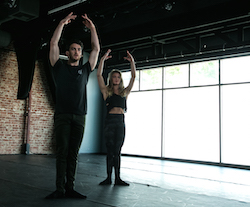
Teddy Forance and Caitlin Kinney, choreographers for CLI Studios. Photo by Rob Daly and Quinn Wharton.
“We filmed with over 40 different choreographers within the last year,” Arpino states. “It is the first time I know of where you are able to take a class from all of these renowned choreographers at your own time, in your own space, from anywhere in the world. It gives people a great opportunity to learn from some of the top choreographers in the country. We’re always looking for more ways to educate and inspire people, and get dance videos online.”
CLI Studios offers multiple styles of dance, including jazz, contemporary, ballet, basic technique, hip hop, salsa and more. “We like to keep it diverse in terms of styles,” Arpino says. One benefit of CLI Studios for teachers is learning a multitude of dance styles that you may not be as comfortable with, and keeping up with ever-evolving dance trends.
“If you’re teaching at a studio but you’re not a hip hop teacher, you could watch one of these videos, learn four to six counts of eight of the Intermediate Hip Hop class and teach that,” Arpino explains. “Even though a certain style might not be your go-to style as a teacher, someone like Kenny gives you choreography that you can effectively and efficiently teach to younger students. That’s the benefit of doing it online – you can experiment with different styles and not jump into a class when you might be in over your head as a dancer or teacher.”
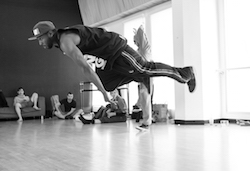
Twitch instructing a class for CLI Studios. Photo by Rob Daly and Quinn Wharton.
To those who would question the idea of dancing at home, and the safety concerns involved with that, Arpino says he is not worried as of now. He says, “Right now, we offer intermediate and advanced classes that are really geared toward dancers who are training at studios pretty frequently. On a technical level, it’s really up to you to know what you can and can’t do. No one in the video is telling you to do an ariel for the first time.”
He continues, “As we branch out in to more intermediate styles, I think [safety] is definitely something we’ll have to be very conscience of. We’re teaching people how to move who might not have the experience or the flexibility. Our choreographers are really good at teaching different moves that are challenging or something that might be pushing you, but they’re good at breaking it down and not pushing someone too far.”
CLI Studios wants to challenge, inspire and continue collaborating with many different artists and choreographers. One of those artistic humans is Wade Robson. CLI and Robson recently worked together to create a short dance film entitled FLIGHT.
About Robson, friend and collaborator Teddy Forance says, “Wade and I have wanted to work together for a long time. CLI is definitely in the instructional video space. We’re not really a dance film company, but any time you have any opportunity to work with a great choreographer or great director, I think that’s what we want to do…to offer not only education, but inspiration for our teachers, students and fans.”
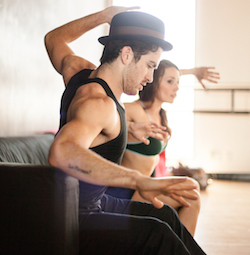
Teddy Forance and Jaimie Goodwin. Photo by Rob Daly and Quinn Wharton.
FLIGHT, the multitude of choreographers, the low cost and the quality of classes available…all of these aspects of CLI Studios are solid reasons for becoming a member of the online dance studio platform.
Co-Founder Forance says it best. “We’re not about replacing your dance studio, or telling you not to go to conventions,” he concludes. “It’s an awesome supplement for a really low price to just stay inspired. For people who want to keep learning and improving, this is a great tool for those goals. Whether you’re a studio, teacher or a dancer, we have a program that we’ve customized for you based around your core values of inspiration, collaboration and education.”
To become a member of CLI Studios, or to learn more, visit www.clistudios.com.
To watch FLIGHT directed by Wade Robson, visit www.clistudios.com/flight.
By Allison Gupton of Dance Informa.
Photo (top): Caitlin Kinney, co-creator and choreographer for CLI Studios. Photo by Rob Daly.
The post CLI Studios: Inspiration, Collaboration and Education appeared first on Dance Informa Magazine.
